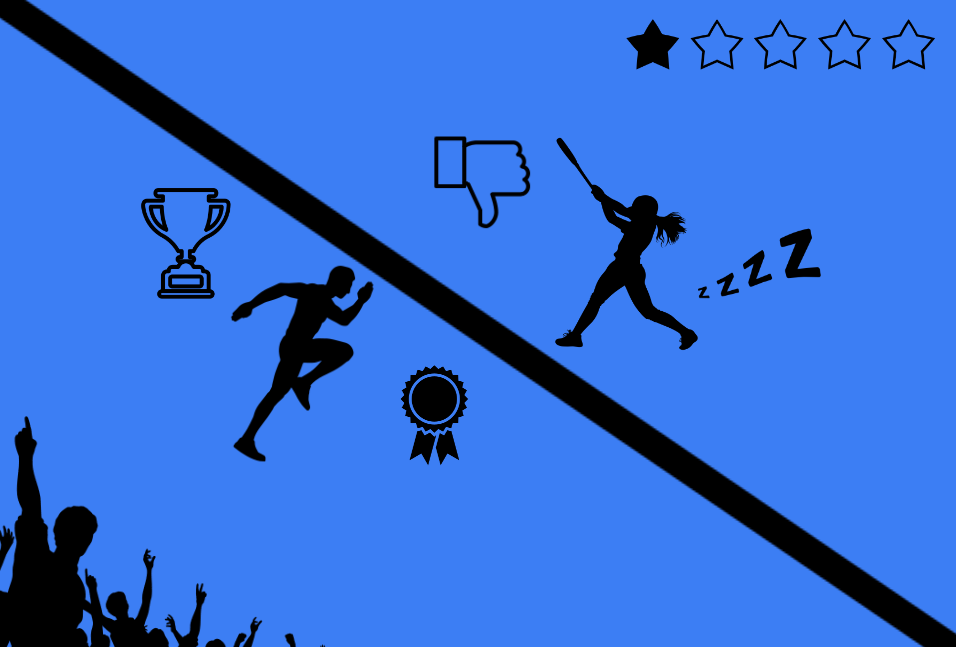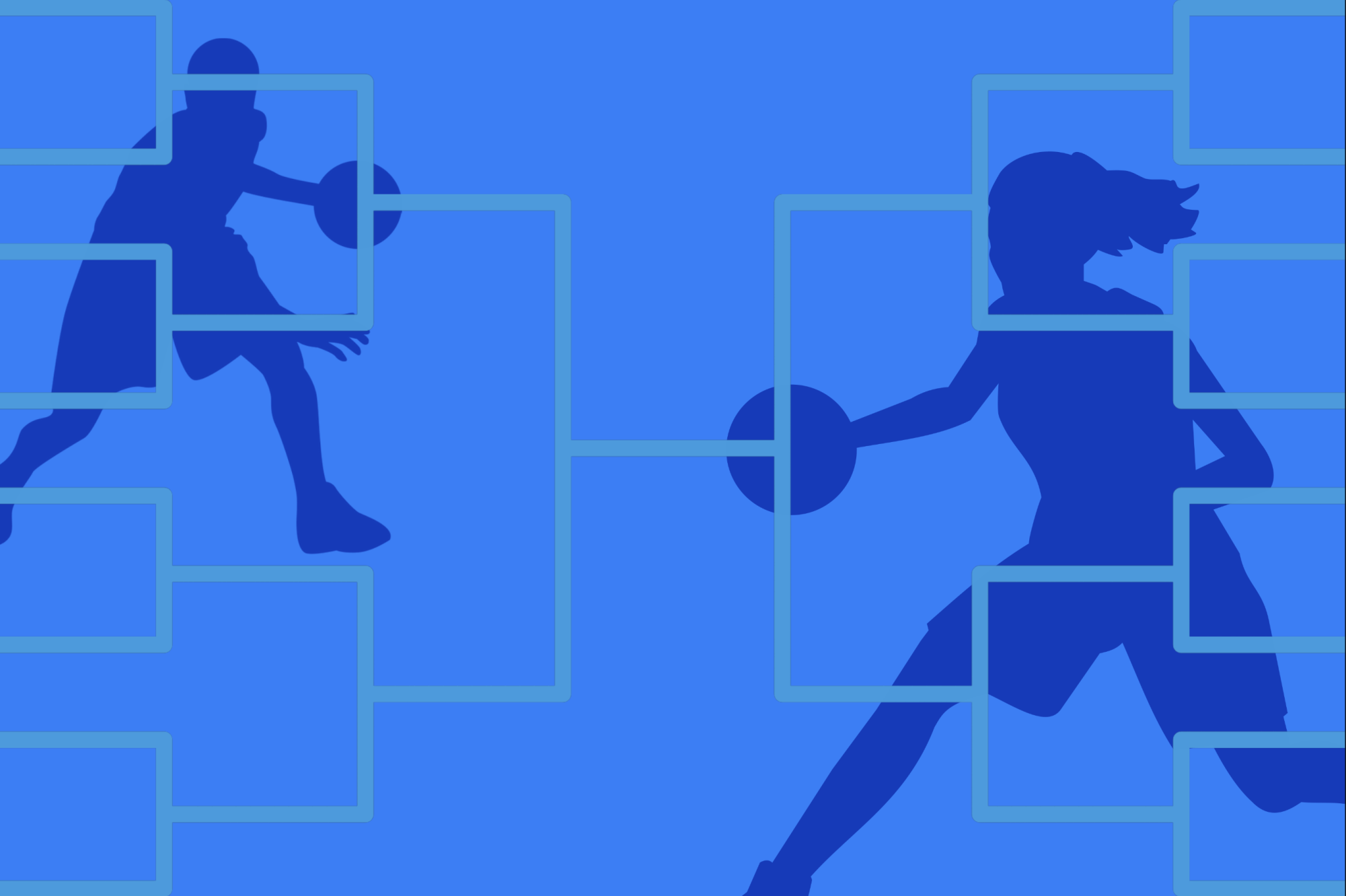
Fair play or foul? Uncovering the gap between women’s and men’s sports

From Instagram to ESPN to the hallways of Wayland High School, talk of March Madness is everywhere. However, for some, a closer listen to the discussions surrounding the tournament reveals that some students are solely talking about the men’s tournament, with no mention of the women’s tournaments to be found. This discrepancy brings up an important point– how does the difference between perceptions of women’s and men’s sports present itself in high school and in the real world?
For softball captain senior Kyra Lefebvre, the inequalities between men’s and women’s sports are especially evident in the debate between softball and baseball.
“I think that a lot of the girls’ games are not really covered as seriously or not at all, whereas the boys’ teams are typically the ones being covered,” Lefebvre said. “At Wayland High School, I feel like softball isn’t really represented that well.”
Lefebvre has noticed not only a lack of positive media coverage surrounding women’s sports, but also a larger amount of inappropriate media.
“I think women’s sports are more sexualized,” Lefebvre said. “I noticed that when I was on TikTok, I would get softball [TikToks that] were checking out the players’ outfits, and the people in the comments would be [bad-mouthing] them. If they showed a home-run or a pitcher pitching, [the comments would say], ‘oh, I can hit that out of the park easily.’ But for baseball TikToks, I’ve noticed the fire emoji or [comments saying], ‘oh, he’s so good.’”
To illustrate a baseball player’s perspective, senior baseball captain Ezra Wyner notices a similar sentiment with a different perspective, especially from a young age.
“I started playing baseball in first grade, when I was six,” Wyner said. “When I started playing, there were lots of girls who played baseball instead of softball. This is likely because when we were younger, we didn’t judge each other as much when it came to female and male stereotypes. At WHS and in the real world, people tend to perceive softball as less serious than baseball.”
This shared stereotype has inspired some female athletes like Lefebvre to work harder, instead of giving up in the face of adversity.
“I’m kind of used to [people speaking differently on men’s and women’s sports],” Lefebvre said. “I think [gender discrimination is] something that women athletes struggle with on a daily basis. But honestly, it fuels me to be a better player and to prove them wrong.”
Even at the high school level, the divide in support for women’s versus men’s sports is clear. WHS Girls basketball coach Amanda Rukstalis pointed out how school spirit is different for girls sports compared to boys sports.
“The cheerleaders have been brought up as a discussion about why they don’t cheer at our games,” Rukstalis said. “I don’t know if that’s the cheerleading team and their coach making that decision or if that’s from higher up.”
These double standards also carry over to the expectation of how female athletes should behave. If a man reacts in a certain way in a game, he could be considered motivated and passionate, while a woman might be judged or perceived as negative for reacting in the same way.
“There was a lot of controversy last year with some of the behavior on the court from the girls in the college basketball world with trash-talking and the hand gestures that players do to each other,” Rukstalis said. “Girls acting one way and boys acting the same way, yet [being looked at differently] was talked about a lot. I do feel like people look at it differently.”
Being in the spotlight as a baseball player in a male-dominated sport, Wyner hopes for better in the future.
“Social media has exaggerated [certain] stereotypes and has created and spread many stereotypes about the skill gap between men’s and women’s sports,” Wyner said. “I definitely feel that a lot of the time, men’s sports, such as baseball, steal the spotlight. There are always more people watching male sports, and this undermines the fact that we have many great female athletes. I would like to work to increase attendance at girls’ sports game, such as softball.”
Join WSPN’s Bella Schreiber alongside her brother and former WSPN Sports Broadcast Editor Josh Schreiber, who is now a UMASS Amherst sports broadcaster, to discuss the discrepancy between women’s and men’s sports. Josh Schreiber has a broadcasting Twitter, Tik Tok and Instagram where fans can stay updated on UMASS sports and, in particular, women’s college basketball.
0:00 – Intro
0:48 – How did you get into sports broadcasting and how did you choose what you wanted to do specifically?
1:55 – What differences did you notice when you started paying attention to and watching [women’s basketball] that other people who aren’t taking the time to get to know it might not realize is special about it? What do you love about it?
4:54 – As a reporter, what have you noticed about how other people are reporting on women’s versus men’s sports and how that could be changed?
11:08 – How do you think we could help with that coverage, help spread the word? As journalists we could be publishing more things, but just as a normal person, how could you help out and push the coverage more?
15:25 – Outro
Your donation will support the student journalists of Wayland High School. Your contribution will allow us to purchase equipment, cover our annual website hosting costs and sponsor admission and traveling costs for the annual JEA journalism convention.





Will Gonsior • Apr 17, 2024 at 1:15 PM
surprised to hear that kids are discussing the men’s tourney at all. Purdue/UConn is the snooziest final anyone could have imagined and even the stars of the tournament (Filipowski, Edey, etc.) don’t come off as being… all that good. DJ Burns at least was a breath of fresh air. I heard about and discussed the women’s tourney far more, whether I was talking with a hockey guy or a debate student: from Sheldon to Reese to Flau’jae to Juju to Paige to Cardoso to Her Royal Floppiness Who Shall Not Be Named (my goodness, don’t we all owe Dawn Staley a huge thank you for preventing an Iowa title?), there’s more stars and more energy on the women’s side by lengths. I agree that coverage hasn’t quite caught up to demand yet.